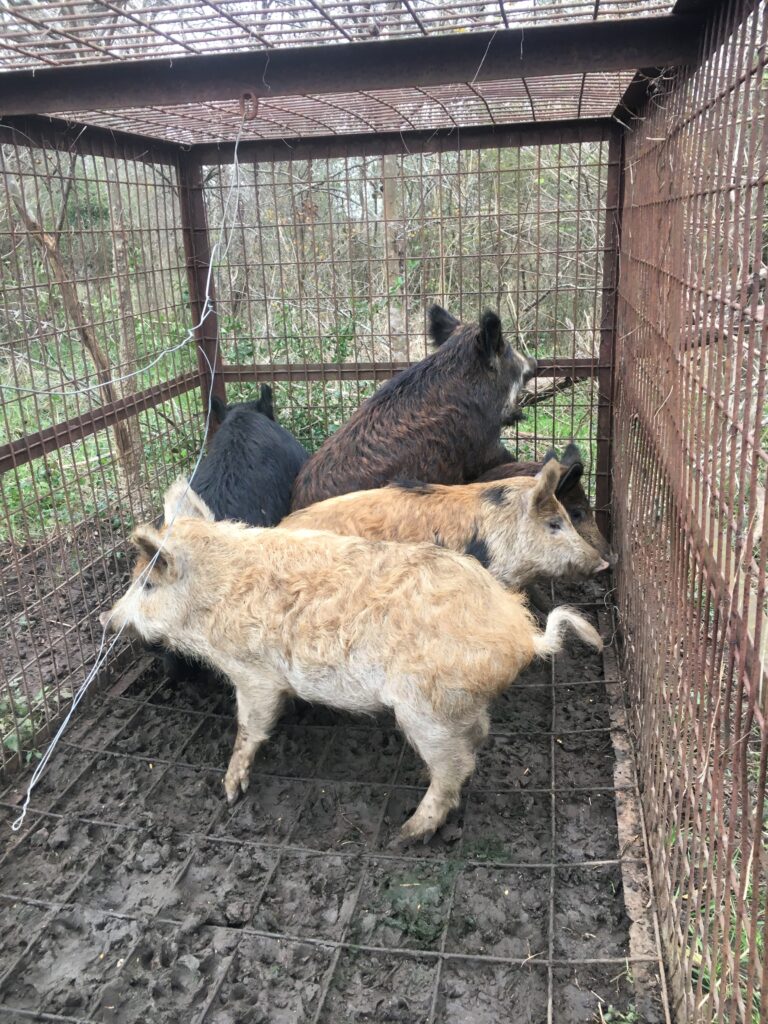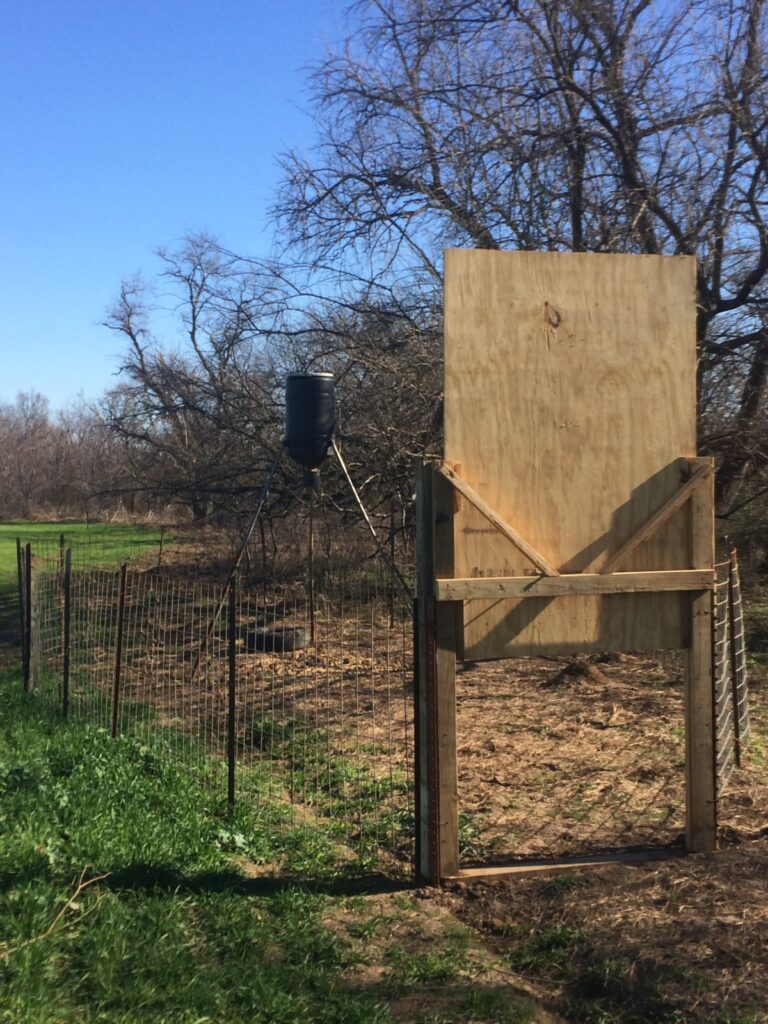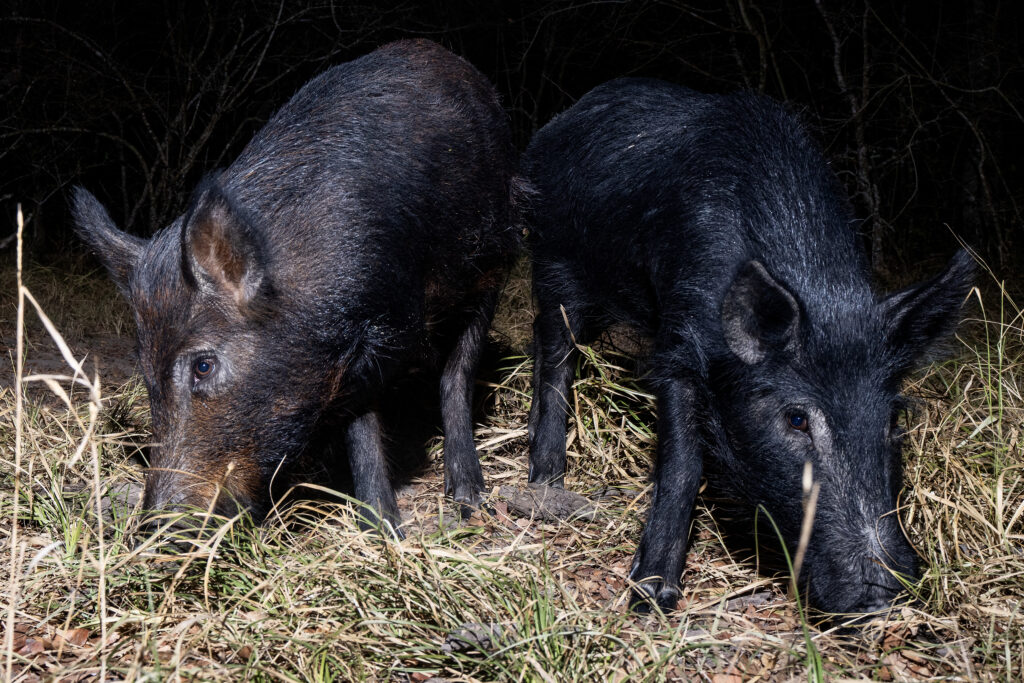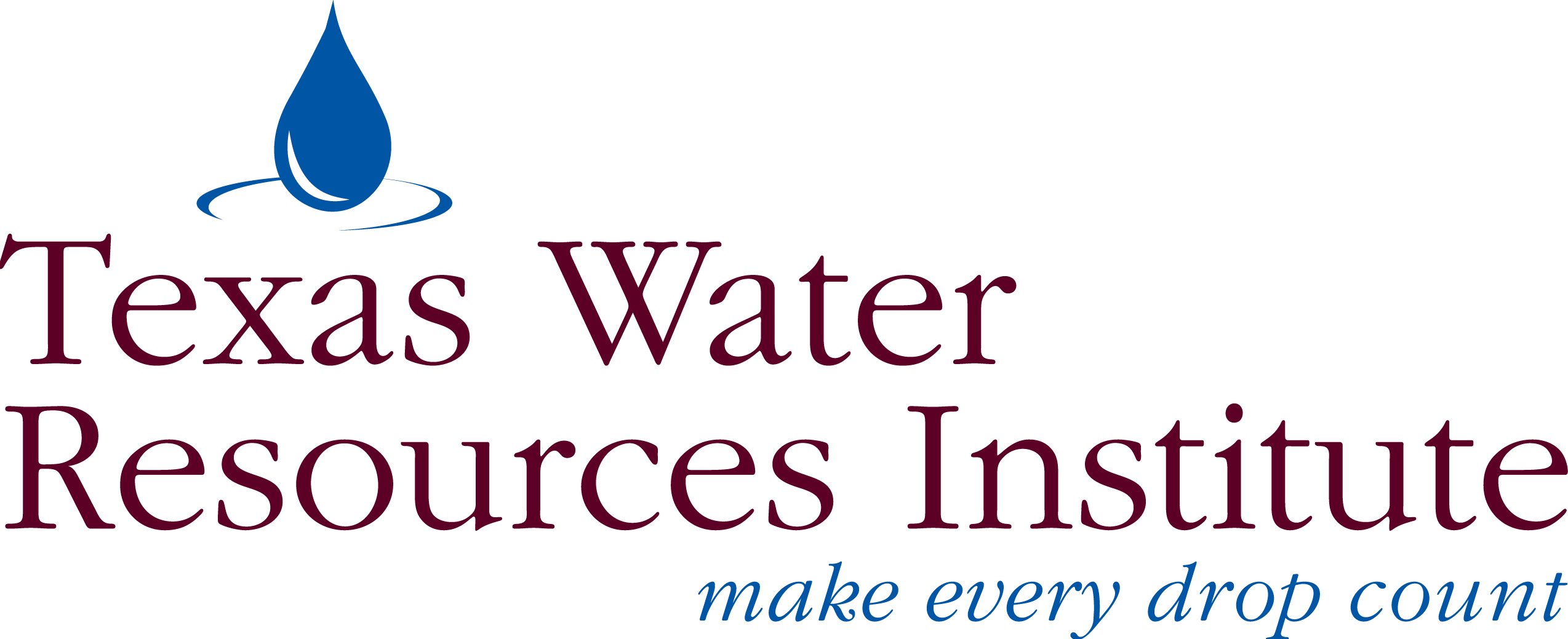Around 500 years ago, Spanish settlers arrived in Texas. Along with them came hogs, some of which escaped and quickly repopulated. Today, more than 2 million invasive feral hogs roam the state, leaving damage in their wake.
Most farmers and ranchers are familiar with the damage hogs leave: irregular patches of uprooted vegetation and soil, crescent-shaped pools of water and mud, bands of mud on trees and fences. This damage can destroy crops, disturb soil and have negative consequences for waterways.
TWRI is working with communities within Matagorda Basin watersheds to address water quality concerns, and feral hog management is a common strategy to help protect regional waterways.

The Matagorda Basin includes these watersheds, which all empty into Matagorda Bay: Lavaca River watershed, Arenosa and Garcitas watershed, Carancahua Bay watershed and Tres Palacios watershed.
Map by Michael Schramm, TWRI.
Feral hogs rely on water to cool off, since they do not have sweat glands. This can lead to the introduction of dangerous bacteria, such as E. coli, from their waste into streams. Feral hog activity can also increase the sediment in water, which can affect acidity and oxygen levels.
“They’re invasive, they’re non-native, they’re not supposed to be here. They’re causing millions upon millions of dollars of damage. So, it is something that we have to address across the board,” said James “Jay” Long, project coordinator of the Natural Resources Institute’s Lonestar Healthy Streams Feral Hog Component.
How to manage feral hogs
So, what can landowners do to manage feral hogs and prevent this damage?
There are many options for feral hog management:
- Shooting
- Snaring
- Trapping
- Aerial gunning
- Use of trained dogs
- Chemical control
According to Long, the best option varies by landowner.
“It all depends on what your land looks like, and what ability and funds you have to dedicate to the issue,” said Long.
Shooting is a popular option because it is immediate and low-cost, he said. Most agricultural producers already have a firearm, and additional accessories can improve effectiveness. However, like any method, there are limitations. One is that this method typically only removes one or two hogs at a time. The remaining hogs may avoid shooting areas afterwards, he said, making them harder to manage.
A similar option is aerial gunning. The biggest advantage of this method is that, even in just one flight, you can cover large amounts of land and eliminate many feral hogs. Unlike shooting, though, aerial gunning requires preparation. Permits must be obtained from the Texas Parks and Wildlife Department, and scheduling must account for weather, visibility and animal movement, Long said.
Trapping is another great option because it can remove large groups of hogs at once. The best type of trap will vary based on your goals and location. Other considerations are trap placement, which should be a place frequented by feral hogs, and trap baiting, which includes ensuring bait is regularly available.
Also consider how native wildlife will be affected, as it is possible for them to accidentally be captured. To avoid inhumane treatment and violation of game laws, traps need to be checked every 24 hours and before it gets hot. Thus, the main downside of trapping is the time and effort required.


Other management methods include snaring, use of trained dogs, and chemical control. These options, though less common, may be well-suited for specific situations. For example, contraceptives can be a good option when space is limited or lethal control is not feasible.
Although these methods can be effective on their own, feral hogs are smart animals and can learn to avoid your efforts. A combination of methods is typically the most effective.
“If you mix trapping with shooting with snaring, not only are you going to increase the amount of pigs you’re taking off of a place, but you’re going to make the pigs have second thoughts about coming to your property,” Long said.
Once management methods are in place, proper disposal of the feral hogs is necessary. One option is harvesting the meat for consumption, which requires food-handlers to wear gloves, disinfect workspaces, and cook the meat to 165° Fahrenheit.
You can also safely dispose of feral hogs on the land by following Texas Commission on Environmental Quality guidelines. Lastly, if not using a lethal method, live feral hogs can be sold to a buying station.
Resources
Managing feral hogs is not easy or simple, but it is important, and there are resources available to help.
“They are by far one of the greatest invasive species challenges that Texas faces. There are millions of them in the state,” said Long. “The amount of time and resources it takes to battle them is large, and it’s going to continue to affect landowners, land managers and the people of Texas into the near future.”
Here are a few places to learn more:
- Natural Resources Institute – Feral Pig Extension
- Texas A&M AgriLife Extension – Coping with Feral Hogs
- Matagorda Education Program

This work was funded by a Clean Water Act Section 319(h) Nonpoint Source Management grant from the Texas State Soil and Water Conservation Board through the US Environmental Protection Agency for the Coordinated Implementation of the Matagorda Basin Watershed Protection Plans.



